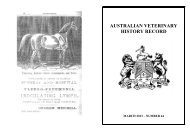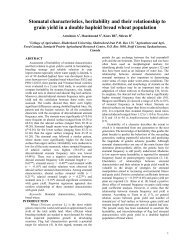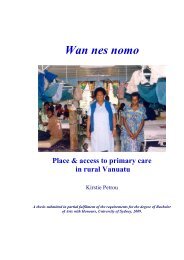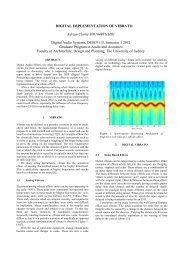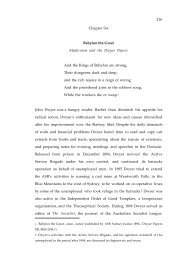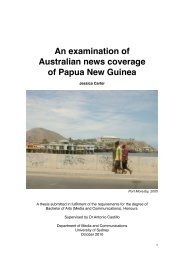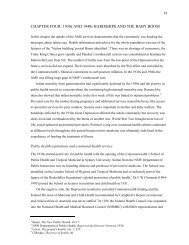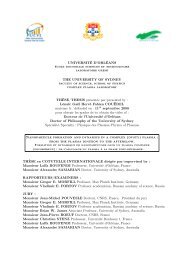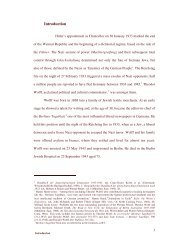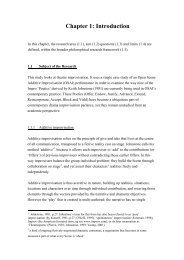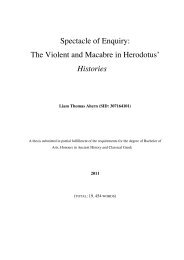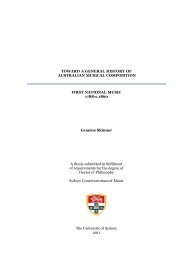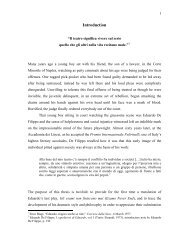journal of digital research & publishing - The Sydney eScholarship ...
journal of digital research & publishing - The Sydney eScholarship ...
journal of digital research & publishing - The Sydney eScholarship ...
You also want an ePaper? Increase the reach of your titles
YUMPU automatically turns print PDFs into web optimized ePapers that Google loves.
1 P M J O U R N A L O F D I G I T A L R ESEARCH & P UBLISHING<br />
To conclude, it is a new form <strong>of</strong> communication with readers that magazine websites<br />
have created, as a result <strong>of</strong> the ‘internet rapidly establishing itself as a major communication<br />
network’ (Thompson 2005, p.309). Taylor (2007) states that magazine publishers are aware<br />
that ‘readers are visual’ (p.24) so by directing the magazine reader to the website, more<br />
opportunities for readers to feel visually stimulated are evident. NME and Cosmopolitan<br />
both have hyperlinks on their site’s to subscribe to the print magazine, as well as links to<br />
‘Inside the new issue. On News stands now!’ (IPC Media 2010, home page, para.6). This<br />
form <strong>of</strong> crosspromotion demonstrates that value is still placed by publishers on both<br />
versions <strong>of</strong> the magazines, as despite the differences in form, ‘the online magazine can<br />
clearly be seen to have developed a life <strong>of</strong> its own’ (Ingham & Weedon 2008, p.209).<br />
So whilst the purpose <strong>of</strong> this article was not to compare the print magazine to the<br />
online magazine, it is evident that through the ‘use <strong>of</strong> visual strategies’ (CrannyFrancis<br />
2005, p.38) used in the magazine websites, an interactive community is created with its<br />
readers, one that would be impossible to replicate by the print version. It is the relationship<br />
between the technological and visual formats that have created the cultural practice <strong>of</strong><br />
the interactive magazine community, highlighted through the acknowledgement <strong>of</strong> the<br />
differing objectives in each medium. Magazine websites <strong>of</strong>fer immediacy, more content,<br />
involvement and choice to a much wider audience, making them ‘hugely popular,<br />
communityled information providers that have their own identities and are not merely<br />
selfconscious addons <strong>of</strong> their glamorous parents’ (Taylor 2007, p.24). Furthermore, NME<br />
and Cosmopolitan, use differing web techniques to invite their readers in. In most cases<br />
the web design used is functional rather than beautiful, proving that magazine website’s<br />
have different objectives to their print titles. This acknowledgement <strong>of</strong> difference is what<br />
complements the targeted readership even more and creates a broader community than<br />
the print magazine’s readership.<br />
Reference List<br />
CrannyFrancis, A 2005, ‘Visuals,’ in Multimedia: texts and contexts, SAGE, London, pp. 2754<br />
Guardian News and Media Limited 2010, Cosmo website to get glossy makeover, viewed 20th April<br />
2010, http://www.guardian.co.uk/media/2008/mar/11/nationalmagazinecompany.<strong>digital</strong>media<br />
54



